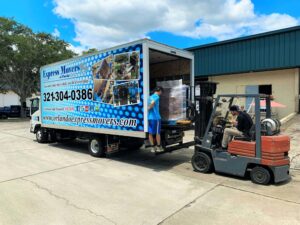 Relocating to a new home can be a stressful experience, particularly when it involves a long-distance move. Adding pets into the mix brings additional challenges, but with careful planning and the right approach, you can ensure a smooth transition for both you and your furry companions. Here are 10 essential tips to help you manage a long-distance move with pets, making the journey as comfortable and stress-free as possible for everyone involved.
Relocating to a new home can be a stressful experience, particularly when it involves a long-distance move. Adding pets into the mix brings additional challenges, but with careful planning and the right approach, you can ensure a smooth transition for both you and your furry companions. Here are 10 essential tips to help you manage a long-distance move with pets, making the journey as comfortable and stress-free as possible for everyone involved.
1. Plan Ahead and Research
Begin planning your move well in advance. Research pet-friendly accommodations, routes, and necessary documentation. Check state and country regulations regarding pet travel to ensure compliance with vaccination, quarantine, and health certificate requirements.
2. Visit the Veterinarian
Schedule a vet visit a few weeks before your move. Ensure your pet is up-to-date on vaccinations and obtain a health certificate if required. Discuss any concerns about travel anxiety or health issues and ask for recommendations on how to keep your pet calm during the move.
3. Update Pet Identification
Make sure your pet has proper identification, including a collar with an ID tag and a microchip with current contact information. This increases the chances of being reunited with your pet if they get lost during the move.
4. Prepare a Pet Travel Kit
Assemble a travel kit with all the essentials your pet will need during the move. Include food, water, bowls, medications, a leash, waste bags, grooming supplies, and a favorite toy or blanket to provide comfort and familiarity.
5. Introduce the Travel Carrier
If your pet isn’t accustomed to a travel carrier, start the introduction process early. Allow them to explore the carrier and create positive associations by placing treats and toys inside. Gradually increase the time your pet spends in the carrier to reduce anxiety on moving day.
6. Maintain a Routine
Pets thrive on routine, so try to keep their schedule as consistent as possible during the moving process. Feed and walk them at their usual times and provide plenty of attention and reassurance to minimize stress.
7. Keep Pets Secure on Moving Day
On the day of the move, keep your pet in a quiet and secure area away from the commotion. This helps prevent them from getting anxious or escaping during the chaos. Use a room with minimal furniture or a pet-friendly area where they feel safe.
 8. Travel Safely
8. Travel Safely
If traveling by car, ensure your pet is securely restrained in a carrier or pet seatbelt. Plan for regular breaks to allow your pet to stretch, hydrate, and relieve themselves. If flying, check with the airline for specific pet travel requirements and consider direct flights to minimize stress.
9. Settle into the New Home Gradually
Upon arrival, introduce your pet to one room at a time, allowing them to acclimate gradually. Set up their bed, food, water, and familiar items to create a sense of security. Spend time with your pet in the new environment to help them adjust.
10. Monitor Your Pet’s Behavior
Be attentive to your pet’s behavior during and after the move. It’s normal for pets to experience anxiety or confusion in a new environment. Provide extra comfort, patience, and reassurance, and seek veterinary advice if you notice any signs of stress or health issues.
Bonus Tips:
• Update Your Pet’s Address: Once you’ve settled in, update your pet’s microchip and ID tags with your new address and contact information.
• Explore Pet-Friendly Spots: Familiarize yourself with pet-friendly parks, vets, and services in your new neighborhood to make the transition smoother for your pet.
• Gradual Introductions: If you have multiple pets, introduce them to the new home and each other gradually to prevent territorial disputes and stress.
A long-distance move with pets requires careful planning and attention to detail, but with these essential tips, you can make the process as smooth and stress-free as possible.
Remember, your pet looks to you for comfort and reassurance, so staying calm and organized will help them feel more secure. By prioritizing their needs and creating a familiar and comfortable environment, you can ensure a successful and happy transition to your new home. Safe travels!
